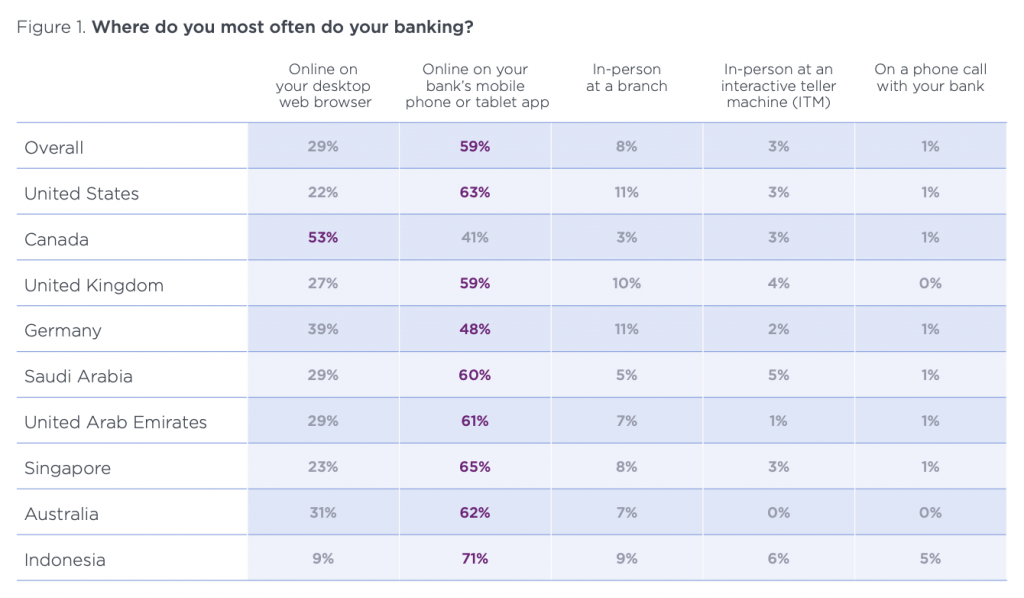Over the past decade, Southeast Asia has undergone a significant technological transformation, a shift that’s been enabled by the region’s highly adaptable digital consumers. Consumers have leapfrogged to mobile devices, skipping personal computers altogether.
Southeast Asia’s mobile-first digital ecosystem can be seen today by consumers’ clear preference for mobile channels. A new study by IT security company Entrust shows that compared to other regions, Southeast Asian customers were the most fervent users of mobile banking.
Entrust, which polled more than 1,300 banking customers from nine countries, found that usage of mobile banking through apps was the highest in Singapore and Indonesia where 65% and 71% of respondents, respectively, indicated using these tools the most to manage their finances and conduct transactions.
These rates were the highest amongst the locations studied.
Only 23% of respondents in Singapore and 9% of respondents in Indonesia indicated using their personal computers to do their banking most of the time.
Around the world, there is a clear preference for online channels, the research found. Globally, 88% of respondents said they prefer to do their banking online in some form, with 59% citing mobile apps, and 29%, their desktop web browser.
This is to the detriment of in-person banking channels, where only 8%, 3% and 1% of respondents, indicated preferring branch banking, interactive teller machines (ITMs), and telephone banking, respectively.

Further reflecting the shift of banking channel preferences, the research found that 61% of respondents globally now prefer opening bank accounts digitally, against 25% for in-person banking at a branch.
And when asked what they believed were the most important factors when choosing a bank. 64% of respondents globally cited online banking capabilities, making this their most important criterion, followed by mobile app availability (54%).

These changing customer preferences come at a time when Southeast Asia is preparing to enter a new era of finance, with digital banks expected to bring the region’s large population of unbanked into the formal financial system.
This year, Singapore will be welcoming its first four digital banks after granting licenses back in 2020.
The Grab-Singtel consortium, known as GXS Bank, and tech giant Sea each received a full digital bank license, while the two digital wholesale bank licenses were awarded to the Ant Group, as well as a consortium comprising Greenland Financial Holdings, Linklogis Hong Kong and Beijing Co-operative Equity Investment Fund Management.
GXS Bank will target underserved segments, including gig economy workers and micro businesses. The Sea Group, which is the parent company of e-commerce platform, will most likely leverage its existing customer base by introducing financial services targeted at buyers and sellers on the e-commerce ecosystem.
Meanwhile, the Ant Group could target micro, small and medium-sized enterprises (MSMEs) in Singapore, starting with those who are already using Alipay or have business dealings with China.
In the Philippines, the Bangko Sentral ng Pilipinas (BSP) has approved six applications for digital banking licenses, and the new entrants are set to become fully operational in the first six months of 2022, BSP Deputy Governor Chuchi G. Fonacier told Manila Bulletin in January.
In Malaysia, the central bank is expected to unveil the five winners of digital banking licenses soon after missing its March deadline. Thailand plans to issue guidelines for digital banks by June.
This article was originally published in Fintech News.












